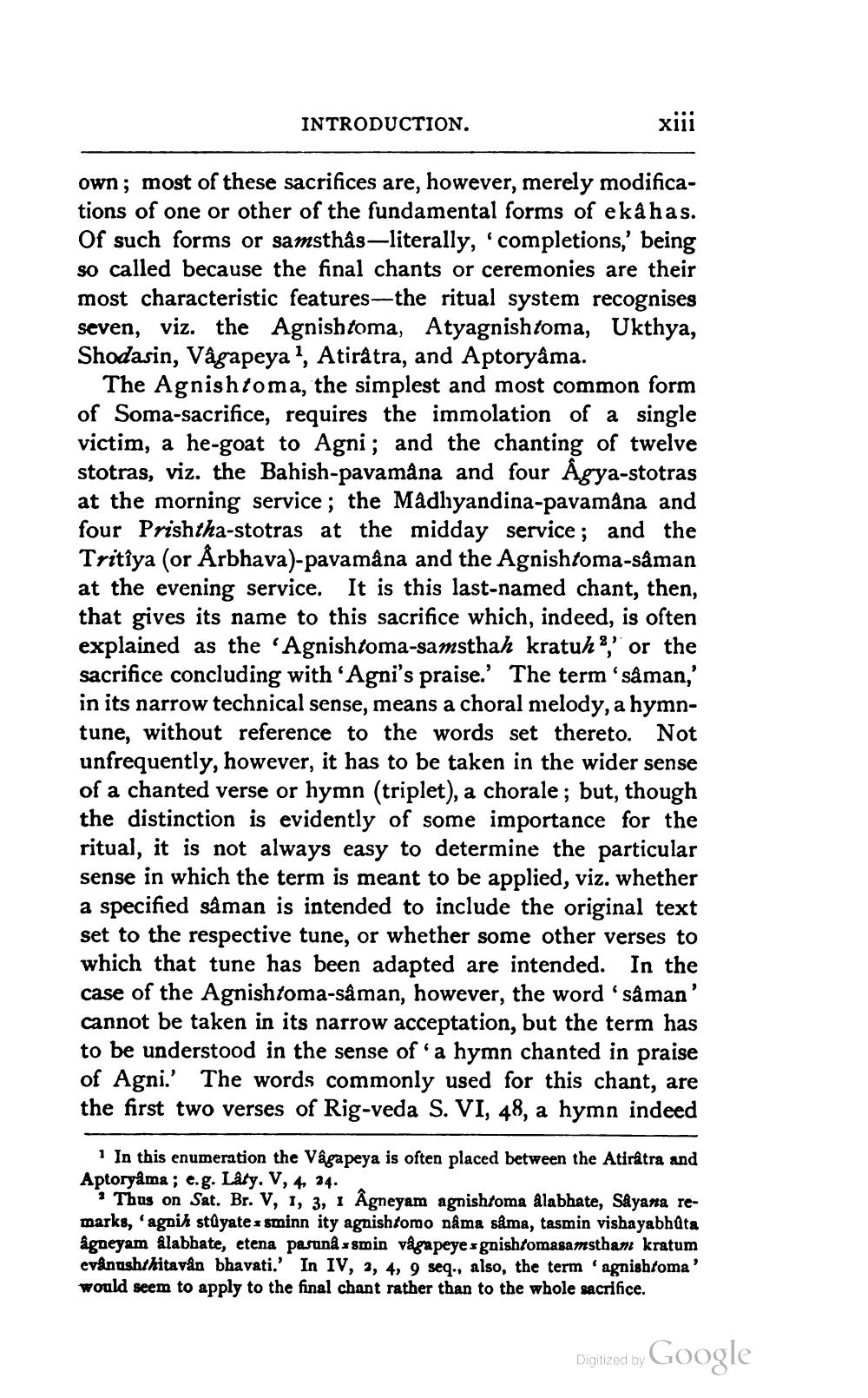________________
INTRODUCTION.
xiii
own; most of these sacrifices are, however, merely modifications of one or other of the fundamental forms of ekåhas. Of such forms or samsthås—literally, completions,' being so called because the final chants or ceremonies are their most characteristic features—the ritual system recognises seven, viz. the Agnishtoma, Atyagnishtoma, Ukthya, Shodasin, Vågapeya!, Atiratra, and Aptoryama.
The Agnishtoma, the simplest and most common form of Soma-sacrifice, requires the immolation of a single victim, a he-goat to Agni; and the chanting of twelve stotras, viz. the Bahish-pavamana and four Agya-stotras at the morning service; the Madhyandina-pavamâna and four Prishtha-stotras at the midday service; and the Tritiya (or Årbhava)-pavamâna and the Agnishtoma-saman at the evening service. It is this last-named chant, then, that gives its name to this sacrifice which, indeed, is often explained as the 'Agnishtoma-samsthah kratuh?,' or the sacrifice concluding with 'Agni's praise.' The term såman,' in its narrow technical sense, means a choral melody, a hymntune, without reference to the words set thereto. Not unfrequently, however, it has to be taken in the wider sense of a chanted verse or hymn (triplet), a chorale ; but, though the distinction is evidently of some importance for the ritual, it is not always easy to determine the particular sense in which the term is meant to be applied, viz. whether a specified såman is intended to include the original text set to the respective tune, or whether some other verses to which that tune has been adapted are intended. In the case of the Agnishtoma-saman, however, the word 'saman' cannot be taken in its narrow acceptation, but the term has to be understood in the sense of a hymn chanted in praise of Agni.' The words commonly used for this chant, are the first two verses of Rig-veda S. VI, 48, a hymn indeed
1 In this enumeration the Vâgapeya is often placed between the Atirâtra and Aptoryåma; e.g. Láty. V, 4, 34.
. Thus on Sat. Br. V, 1, 3, 1 Agneyam agnishtoma alabhate, Sayana remarks, ' agnih stůyate :sminn ity agnishtomo nama sama, tasmin vishayabhůta ågneyam alabhate, etena pasanâ xsmin vågapeye sgnishtomasamsthan kratum evånushthita vån bhavati.' In IV, 2, 4, 9 seq., also, the term 'agnishtoma' would seem to apply to the final chant rather than to the whole sacrifice.
Digitized by Google




